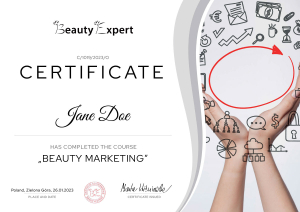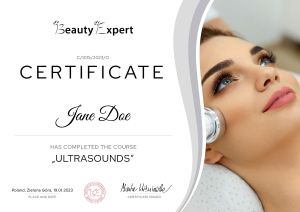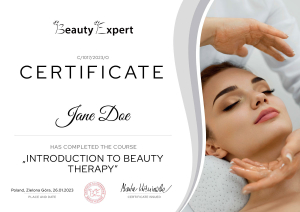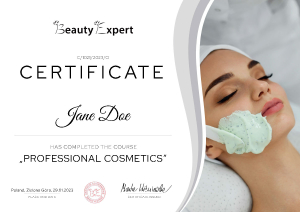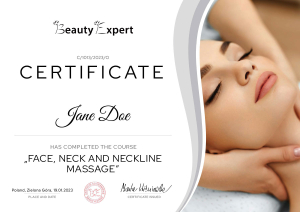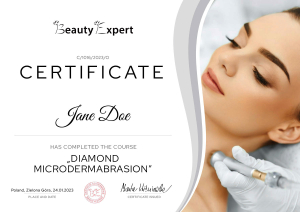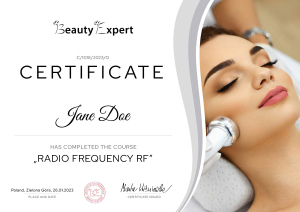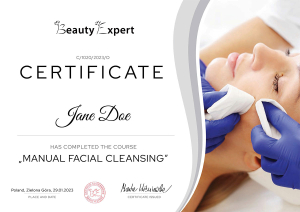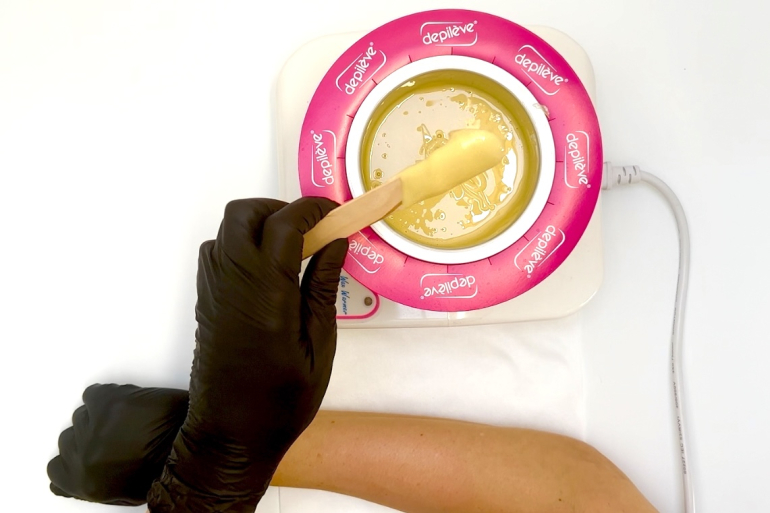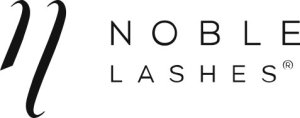If you want to grow your skills at your own pace and truly invest in your future – you’re in the right place. Thousands of students have already chosen Beauty Expert to gain beauty qualifications in their country and abroad. Our online courses now reach over 200 markets worldwide, providing access to modern beauty education – no matter where you live.
Lesson No 3
Facial Massage
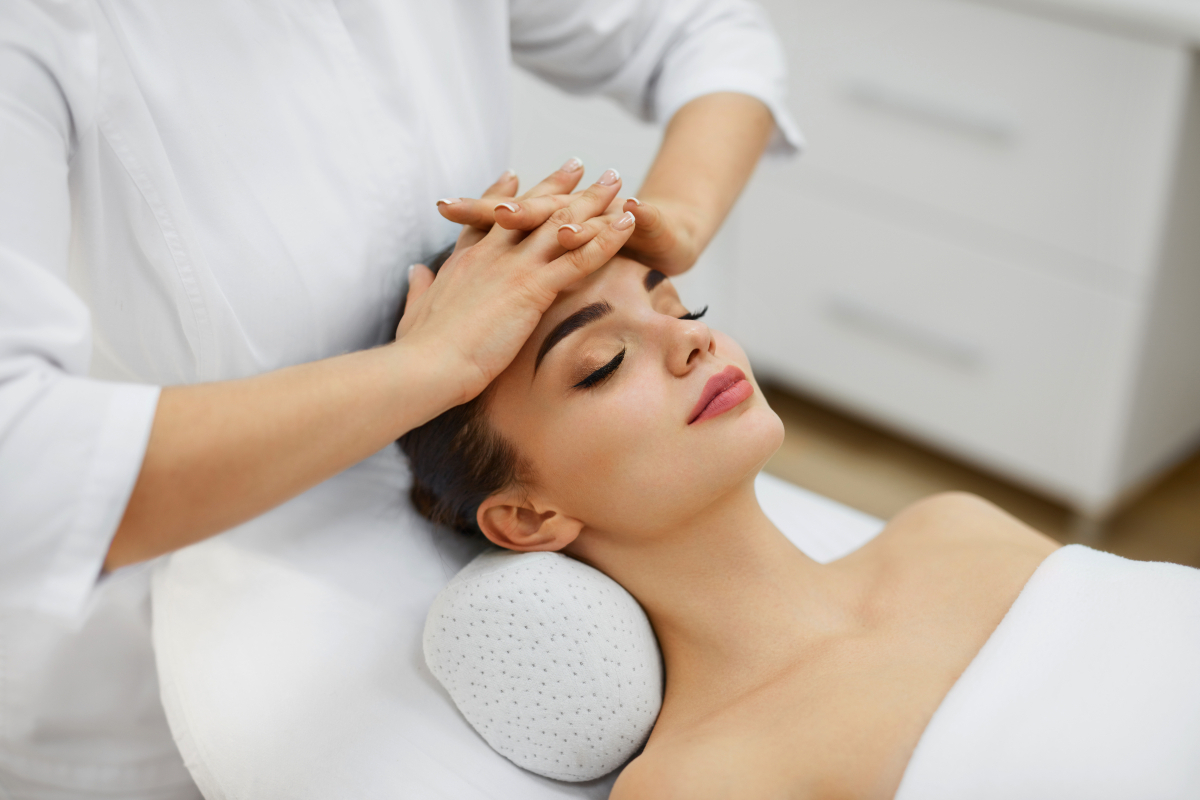
Facial Massage Lesson
Facial massage is a manual therapeutic technique that affects the skin, muscles, and lymphatic system. In this lesson, you'll explore the physiological effects of massage, facial anatomy, and practical use of 50 manual techniques to improve tissue health, promote relaxation, and support anti-aging care.
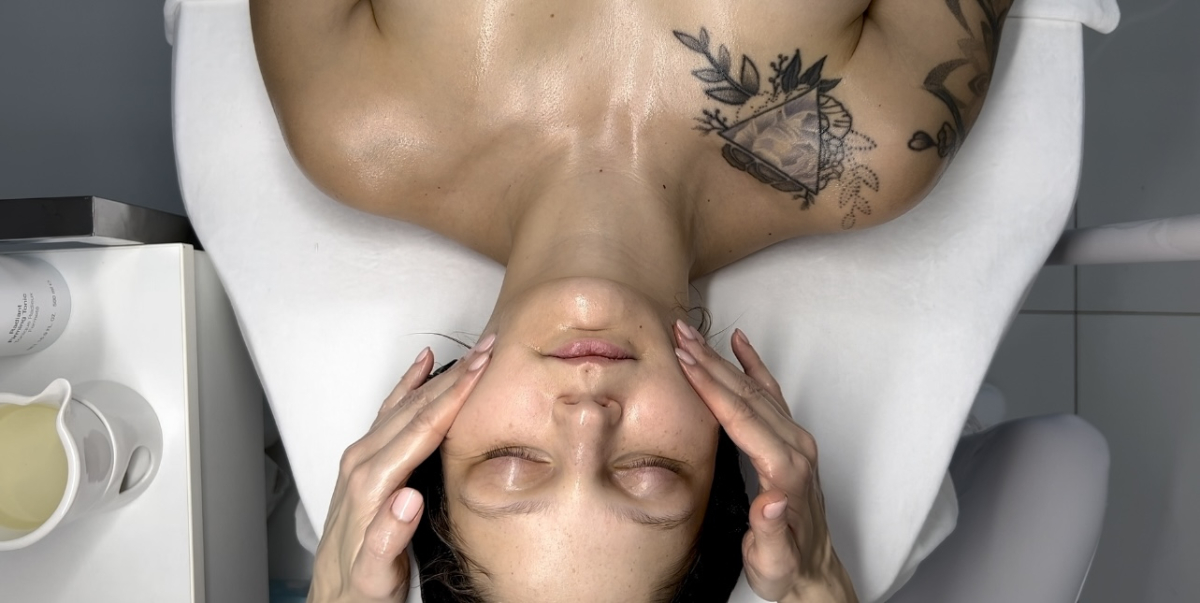
What you’ll learn – theory
- The history of facial massage – how it developed across cultures and its role in skincare.
- Definition of facial massage – a hands-on technique used to enhance the appearance and health of the skin.
- Effects of classical facial massage – including improved circulation, oxygenation, muscle relaxation, and stress relief.
- Cell and tissue structure – to better understand how the skin responds to touch and pressure.
- Facial bone structure – important for guiding massage movements correctly.
- Facial vascular system – to stimulate microcirculation while avoiding irritation.
- Lymphatic system pathways – essential for drainage and reducing puffiness.
- Facial nerve system – to understand massage effects on facial expressions and the nervous system.
- Location of facial expression muscles – for effective relaxation and natural lifting.
- Skin anatomy – including how different layers respond to mechanical stimulation.
- Skin conditions – that may contraindicate facial massage.
- Hygiene and safety protocols – for working safely and professionally during direct skin contact.
- Skin types – and how to adjust massage pressure and technique accordingly.
- Skin aging processes – and how regular massage helps slow them down.
- Oils used in facial massage – including their properties, origins, and suitability for different skin types.
- Massage product selection – such as oils, creams, emulsions, and active ingredients.
- Basics of cosmetic chemistry – relevant to product selection for facial massage.
- Client qualification – including skin analysis and understanding client expectations.
- Workstation setup – ensuring ergonomic, clean, and comfortable conditions.
- Supplies needed for massage – including cosmetics, tools, and protective items.
- Step-by-step procedure – from initial movements to final techniques.
- Post-massage skincare – for extending and maintaining the benefits.
- Post-treatment recommendations – such as avoiding makeup, sun exposure, and exercise.
- Combining facial massage with other treatments – like masks, peels, or hydrating procedures.
What you’ll learn – practice
- Workstation setup – in accordance with hygiene, comfort, and professional standards.
- All necessary materials – such as oils, towels, headbands, and cleansing products.
- Skin preparation – including cleansing, toning, and optional analysis.
- Step-by-step facial massage – using 50 manual techniques for relaxation and lifting.
Get your certificate after every course
After each course or lesson, you can test your knowledge with a quiz and instantly download a certificate in 3 languages. You’ll receive a diploma after completing the school and passing the final exam.

